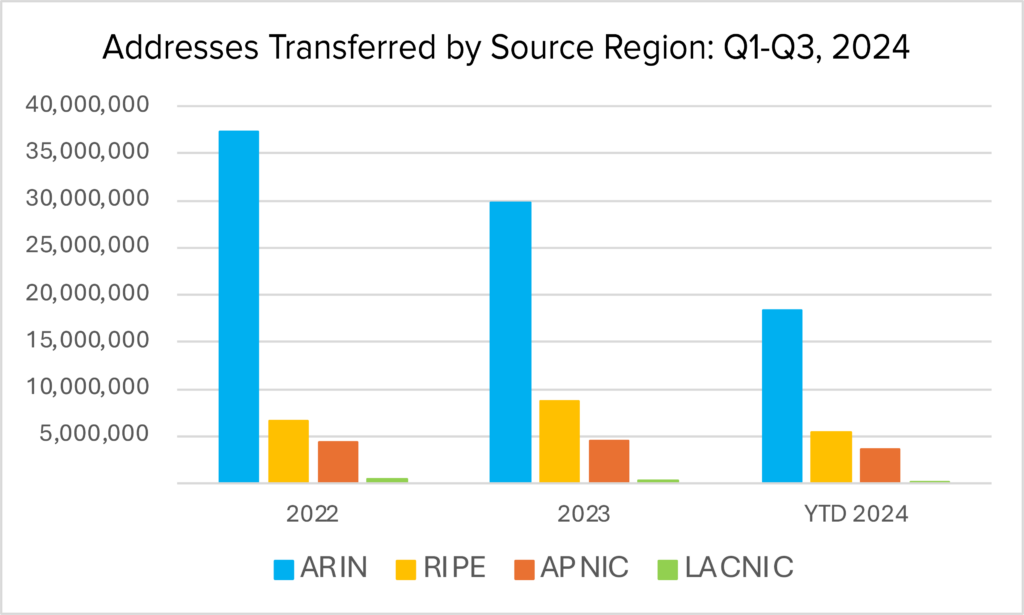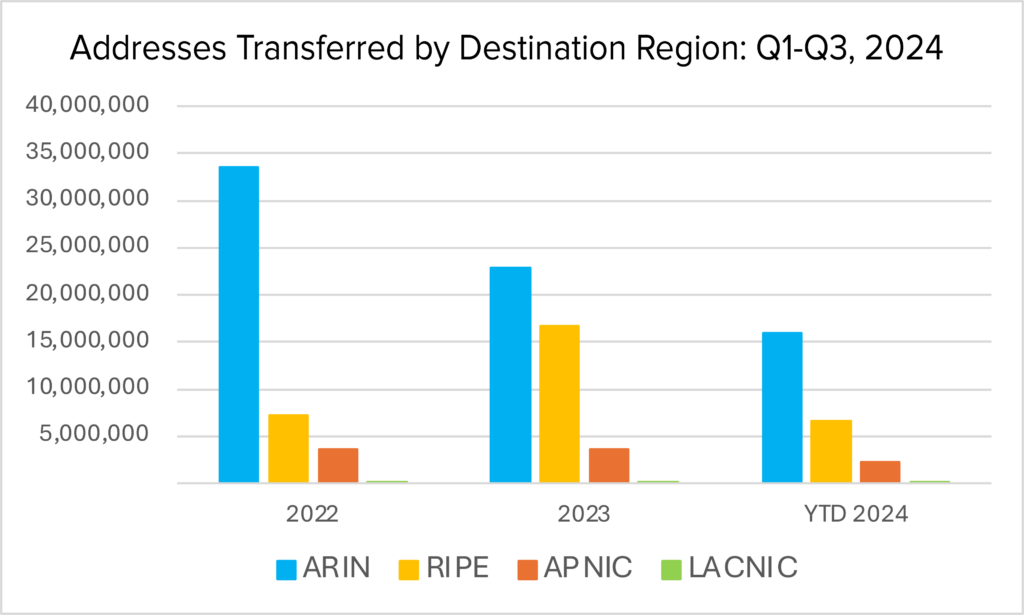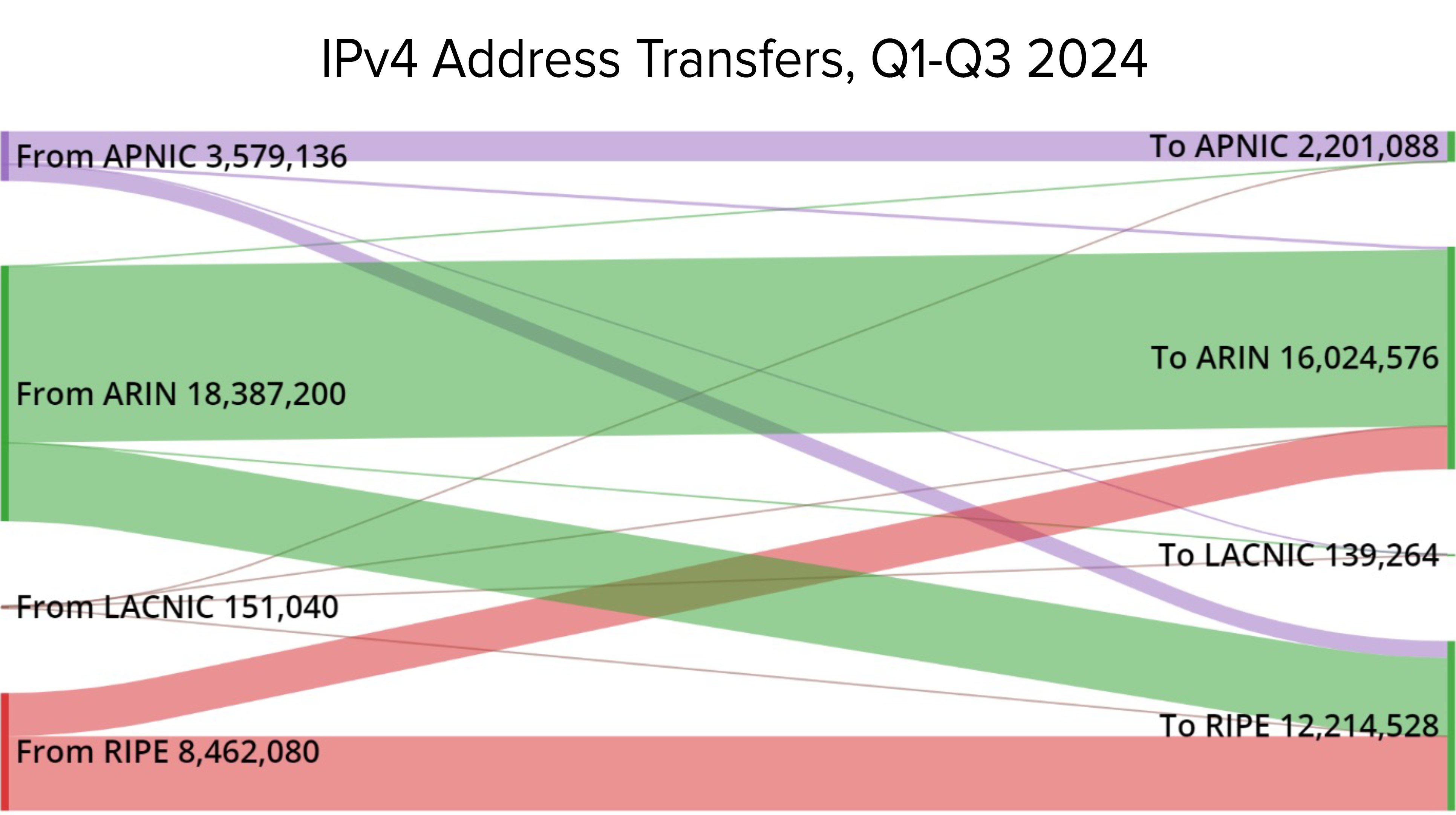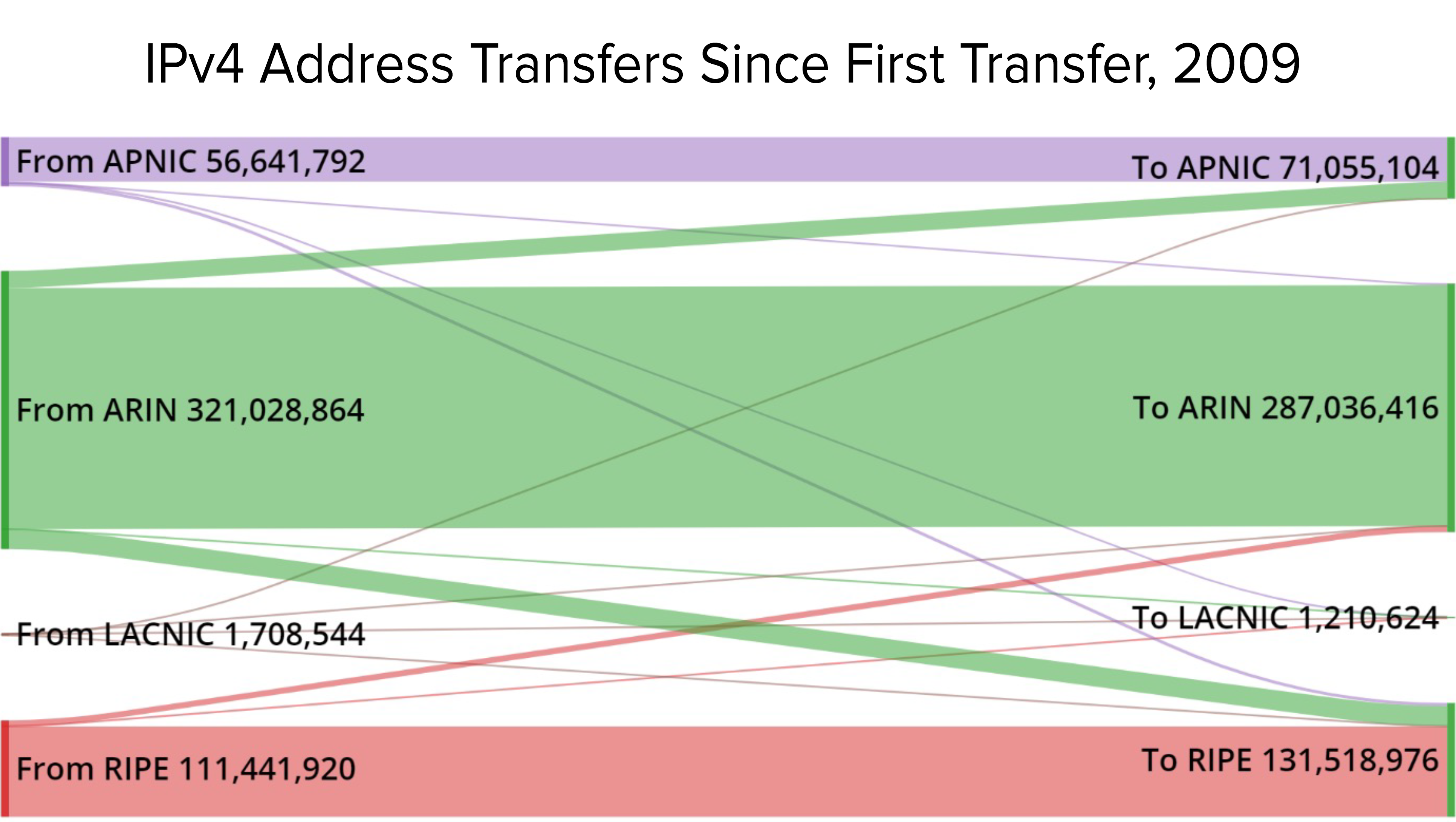The Global Flow of IPv4 Addresses
INSIGHTS
by Lee Howard
In the first three quarters of 2024, ARIN continued to outpace the other RIRs in both sourcing and receiving addresses. The Internet was invented in North America, so there were more of the old classful address allocations (Class A, Class B) in the ARIN region. One buyer in the ARIN region consistently buys about half of all addresses, explaining much of the dominance of ARIN as a destination region.
Anecdotally, home users in the ARIN region expect to be assigned a public IPv4 address. In much of the rest of the world, the Internet is mobile, with Network Address Translation (NAT) sharing few addresses among many users. Therefore, there is more demand for IPv4 addresses in some regions than others, even when comparing those with similar populations.


ARIN is on pace to source fewer addresses in 2024 (24MM) compared to 2022 (37MM) and 2023 (30MM). RIPE receives more addresses than it sources, but this is primarily due to one multinational using its RIPE NCC account to receive addresses rather than into its ARIN or APNIC accounts. There are several possible reasons for this transfer policy, including RIPE’s fees (€1800 + €75 per assignment) compared to ARIN’s fees ($67,200 for a /10-/8), or RIPE’s less-strict policy on demonstration of need.

2024 Transfers YTD, generated by SankeyDiagram.net
The above diagram shows 2024 transfers. Compare these flows to transfers over all time, below. More addresses have gone to RIPE in 2024 than usual, due to the large buyer mentioned above. Also, the ARIN to APNIC flow has all but stopped.

IPv4 Transfers over All Time, generated by SankeyDiagram.net